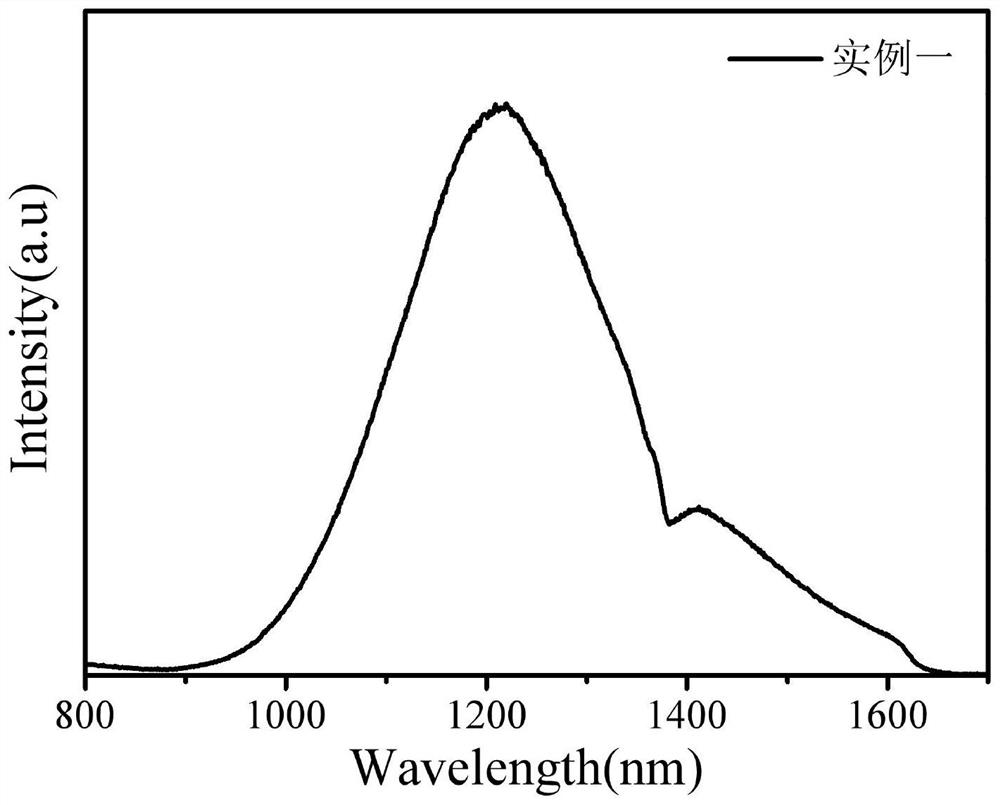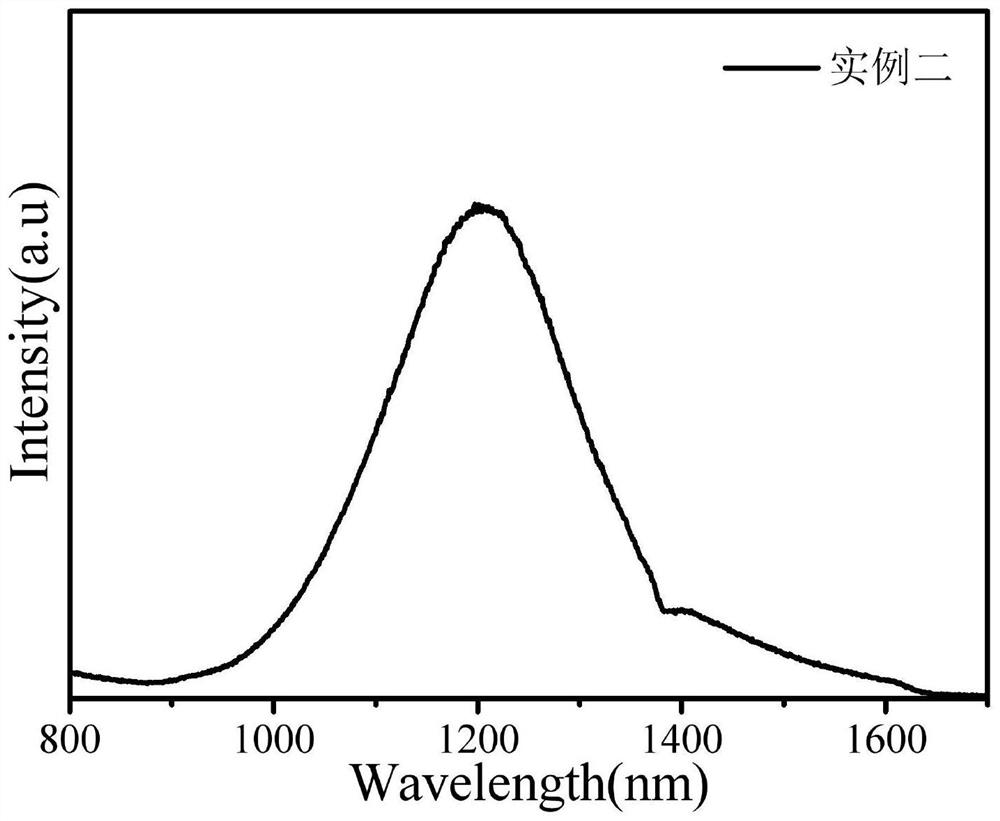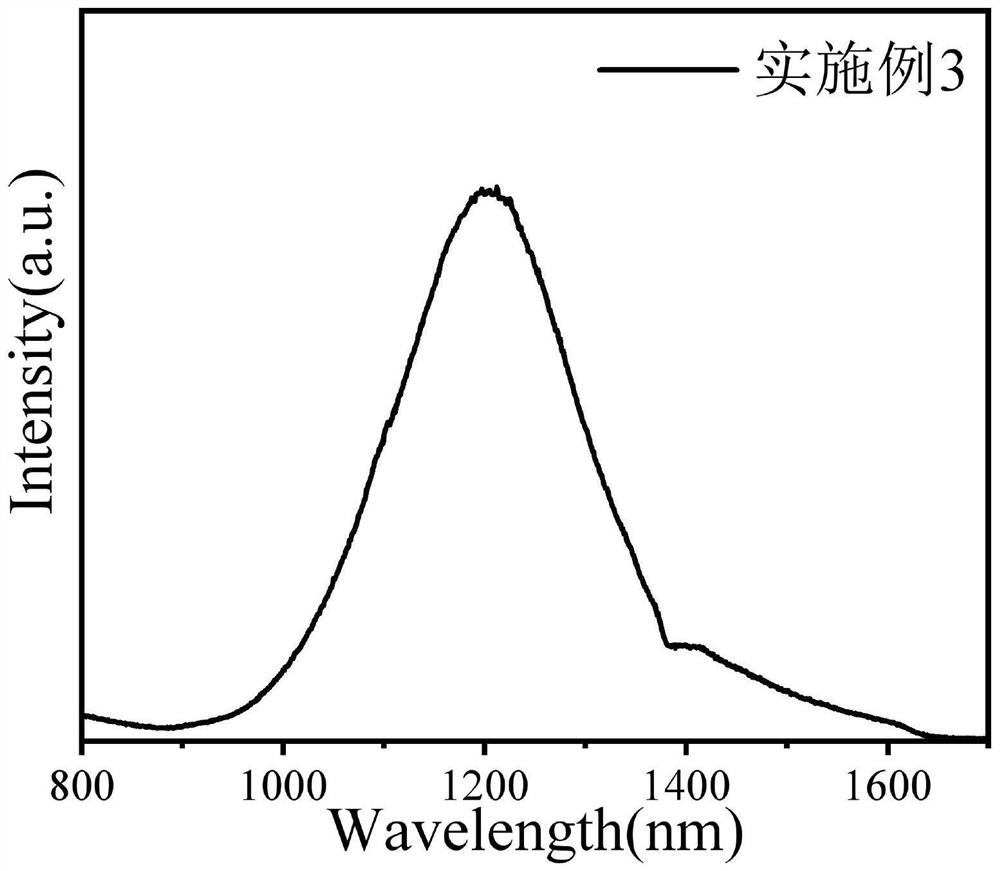Near-infrared light-emitting tin-bismuth-doped aluminosilicate glass optical rod and preparation method thereof
An aluminosilicate glass, near-infrared technology, used in glass manufacturing equipment, glass pressing, glass molding and other directions, can solve the problem of low near-infrared luminous efficiency, complex glass sample preparation process, unclear near-infrared luminescence mechanism, etc. problem, to achieve the effect of good luminous efficiency and simple preparation method
- Summary
- Abstract
- Description
- Claims
- Application Information
AI Technical Summary
Problems solved by technology
Method used
Image
Examples
Embodiment 1
[0030] see Figure 1-4 , the present invention provides the following technical solutions: a near-infrared light-emitting tin-bismuth-doped aluminosilicate glass light rod, the molar percentage components of each component are:
[0031]
[0032]
[0033] A preparation method of near-infrared light-emitting tin-bismuth-doped aluminosilicate glass light rod, comprising the following steps:
[0034] S1: Calculate the required amount of each raw material according to the above molar ratio;
[0035] S2: Weigh the raw materials on a high-precision electronic balance;
[0036] S3: Pour each raw material into an agate mortar and grind for 15min in turn, until the mixture is uniform to obtain mixed powder;
[0037] S4: Pour the mixed powder into a high-purity alumina crucible, put the high-purity alumina crucible containing the sample into a high-temperature furnace, and melt at 1600° C. for 90 minutes to obtain a molten glass liquid;
[0038] S5: After the heat preservation, ...
Embodiment 2
[0043] The difference between this embodiment and Embodiment 1 is:
[0044] see Figure 1-4 , the present invention provides the following technical solutions: a near-infrared light-emitting tin-bismuth-doped aluminosilicate glass light rod, the molar percentage components of each component are:
[0045]
[0046] A preparation method of near-infrared light-emitting tin-bismuth-doped aluminosilicate glass light rod, comprising the following steps:
[0047] S1: Calculate the required amount of each raw material according to the above molar ratio;
[0048] S2: Weigh the raw materials on a high-precision electronic balance;
[0049] S3: Pour each raw material into an agate mortar and grind for 15min in turn, until the mixture is uniform to obtain mixed powder;
[0050] S4: Pour the mixed powder into a high-purity alumina crucible, put the high-purity alumina crucible containing the sample into a high-temperature furnace, and melt at 1600° C. for 90 minutes to obtain a molten...
Embodiment 3
[0056] The difference between this embodiment and Embodiment 1 is:
[0057] see Figure 1-4 , the present invention provides the following technical solutions: a near-infrared light-emitting tin-bismuth-doped aluminosilicate glass light rod, the molar percentage components of each component are:
[0058]
[0059]A preparation method of near-infrared light-emitting tin-bismuth-doped aluminosilicate glass light rod, comprising the following steps:
[0060] S1: Calculate the required amount of each raw material according to the above molar ratio;
[0061] S2: Weigh the raw materials on a high-precision electronic balance;
[0062] S3: Pour each raw material into an agate mortar and grind for 15min in turn, until the mixture is uniform to obtain mixed powder;
[0063] S4: Pour the mixed powder into a high-purity alumina crucible, put the high-purity alumina crucible containing the sample into a high-temperature furnace, and melt at 1600° C. for 90 minutes to obtain a molten ...
PUM
| Property | Measurement | Unit |
|---|---|---|
| Fwhm | aaaaa | aaaaa |
Abstract
Description
Claims
Application Information
 Login to View More
Login to View More - R&D
- Intellectual Property
- Life Sciences
- Materials
- Tech Scout
- Unparalleled Data Quality
- Higher Quality Content
- 60% Fewer Hallucinations
Browse by: Latest US Patents, China's latest patents, Technical Efficacy Thesaurus, Application Domain, Technology Topic, Popular Technical Reports.
© 2025 PatSnap. All rights reserved.Legal|Privacy policy|Modern Slavery Act Transparency Statement|Sitemap|About US| Contact US: help@patsnap.com



